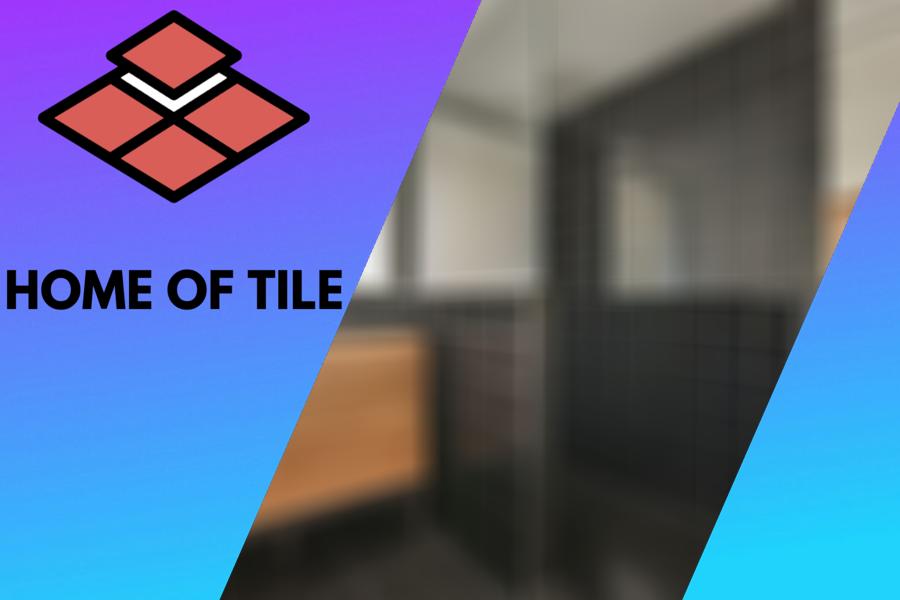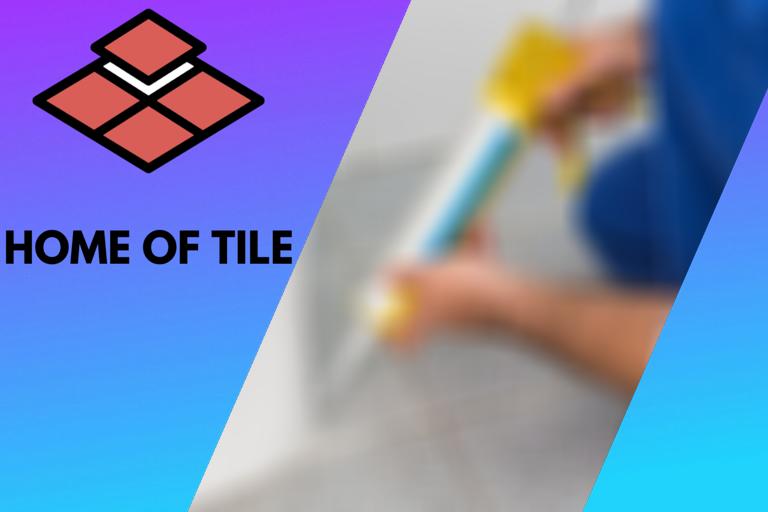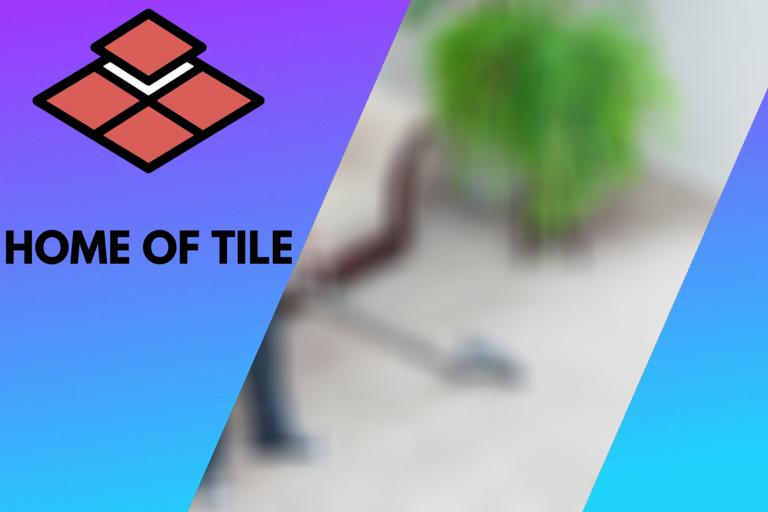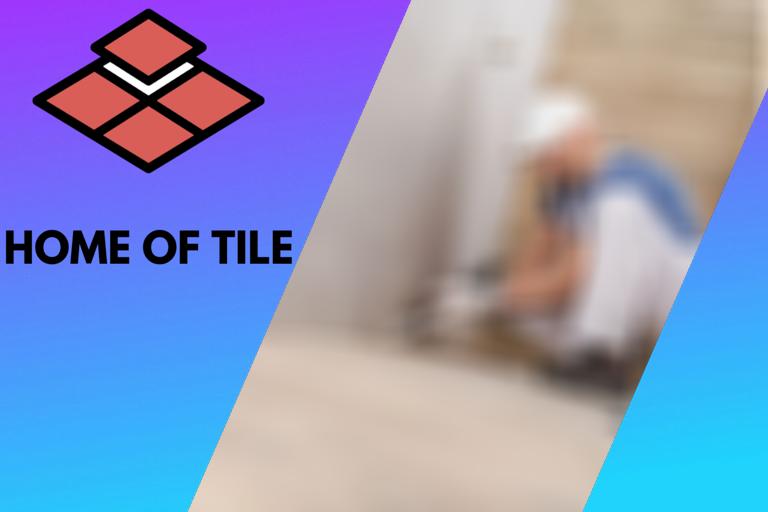The Ultimate Guide to Tile Waterproofing. 25 things you should know
Are you tired of dealing with mold and mildew on your bathroom tiles or water damage on your kitchen backsplash? Don’t worry because I have you covered! My latest blog post, ‘Tile Waterproofing,’ will provide valuable information and tips to protect your surfaces from moisture and keep them fresh, clean, and new.
Tile waterproofing:
Tile waterproofing is essential in preventing water damage in homes and buildings, increasing durability, and preventing mold and mildew growth. Using various waterproofing methods, such as liquid membrane, sheet membrane, or cementitious waterproofing, tiles can be protected in high moisture areas such as bathrooms, kitchens, and balconies.
By choosing the right product and following application instructions, waterproofing ensures long-lasting protection, easy maintenance, and improved aesthetics for tiled surfaces.

Discover the essential steps to effectively waterproof your tiles, preventing potential water damage and mold growth. Learn about different waterproofing materials, methods, and expert tips for achieving a durable, long-lasting seal in various tiling situations.
Contents
- 1 Tile Water-Resistance Enhancement
- 2 Is it Possible to Apply Waterproofing Over the Tiles?
- 3 What is the Most Effective Waterproof Tile?
- 4 Is it Possible to Waterproof Without Removing Existing Tiles?
- 5 What materials can be utilized for waterproofing tiles?
Tile Water-Resistance Enhancement
Water damage can compromise your home’s or building’s integrity, causing various problems, from mold growth to structural damage. Investing in tile waterproofing is one of the best ways to prevent water damage.
In this comprehensive guide, I will discuss the benefits of tile waterproofing, its types, and its application in various areas.
• Benefits of Tile Waterproofing
– Increased Durability
Waterproofing is essential in maintaining the durability of tiles in high-moisture areas such as bathrooms, kitchens, and basements. It helps protect tiles from constant exposure to water, which may weaken over time and lead to cracks, discoloration, or staining.
– Mold and Mildew Prevention
Mold and mildew can endanger your family’s health, especially for those with respiratory issues or allergies. Waterproofing helps inhibit the growth of mold and mildew by preventing water from seeping into grout lines and tile pores.
– Easy Maintenance
Waterproof tiles are easier to clean and maintain than porous tiles that absorb water and stains easily. Waterproofing ensures that dirt and grime slide off the surface, making it hassle-free to clean and maintain.
– Improved Aesthetics
Waterproofing helps protect the tiles’ appearance for longer, maintaining their color and texture. It prevents discoloration and staining, ensuring your tiles look fresh and new even after many years.
• Types of Tile Waterproofing
– Liquid Waterproofing Membrane
This type is a thin, flexible coating that is applied to the surface of tiles and dries to form a waterproof barrier. The liquid membrane is usually a latex or rubber-based formula that creates a seamless and elastic layer adjustable to seasonal temperature fluctuations.
It is suitable for interior and exterior use and offers high protection.
– Sheet Membrane
A sheet membrane is a prefabricated waterproofing barrier available in rolls, typically made of rubber, thermoplastic, or elastomeric materials. This type is mechanically fastened, glued, or thermally welded to the surface, creating an impermeable barrier.
Sheet membranes are known for their durability and puncture resistance, making them ideal for heavy-duty applications.
– Cementitious Waterproofing
Cementitious waterproofing is a cement-based compound mixed with water and applied directly to the tiled area. It creates a rigid, monolithic waterproof barrier that adheres well to various substrates, including concrete, masonry, and brick.
This type of waterproofing is ideal for areas with constant water exposure, such as swimming pools and water tanks.
• Tile Waterproofing Application
– Shower Area
Waterproofing is crucial in shower areas to prevent water seepage, which can cause tiles to loosen and grout to disintegrate. A waterproof membrane is applied beneath the tiles or over the mortar bed to create a watertight barrier.
This application is essential whether you have a shower tray or a tiled shower floor.
– Bathroom Floor
Bathrooms are highly susceptible to water damage, and the floor must be waterproof. Applying waterproofing membranes to bathroom floors helps protect the subfloor and prevents water from seeping into other rooms.
– Kitchen Backsplash
While kitchen backsplashes may not experience high moisture levels, waterproofing is still necessary to protect tiles from water splashes and stains. A protective layer of waterproofing treatment will make the backsplash easier to clean and maintain.
– Balconies and Terraces
Outdoor areas like balconies and terraces are exposed to constant water exposure and fluctuating temperatures that can damage tiles. Waterproofing these areas is essential in preventing water from entering your home, causing structural damage, and enhancing tiles’ durability.
• Application Tips
- Surface Preparation: Ensure the surface is clean, dry, and free from contaminants before applying the waterproofing product. This will ensure maximum adhesion and long-lasting protection.
- Choose the Right Product: Consider factors like the area’s moisture exposure, tile material, and substrate type when choosing the right waterproofing product. Consult an expert if you are unsure about the best product.
- Follow Manufacturer Instructions: Each waterproofing product has specific instructions regarding application procedures, drying time, and compatibility with other materials. Be sure to follow these instructions to achieve the best results.
- Test for Water Tightness: After the waterproofing membrane has fully cured, it is essential to test its effectiveness. Conduct a water leak test by flooding the area with water for 24 hours, then monitoring for any signs of seepage or intrusion.
In conclusion, tile waterproofing is critical to any tiling project, offering protection, durability, and prevention from mold and mildew growth. Invest in high-quality waterproofing products, and apply them correctly to ensure the long-lasting performance of your tiles.
Is it Possible to Apply Waterproofing Over the Tiles?
When it comes to bathroom and kitchen renovations, homeowners often wonder if it’s possible to waterproof existing tiles. A commonly encountered problem during such projects is waterproofing issues that may lead to leaks, mold growth, and eventual damage to the structure of the building.
I will discuss the possibility of waterproofing over tiles, the different methods available, and the pros and cons of each technique.
• The Need for Waterproofing Over Tiles
By nature, tiles are porous, meaning they can absorb water. In areas with constant exposure to water, like bathrooms and kitchens, this moisture can deteriorate the tile grout and the adhesive used to bond the tiles to the wall or floor.
This, in turn, can cause water to seep behind the tiles and cause damage to the substrate, leading to costly repairs.
Waterproofing over tiles not only prevents these issues but also adds an extra layer of protection against the growth of mold and mildew, improving the overall hygiene and air quality in your home.
• Assessing the Condition of Your Tiles
Before deciding whether to waterproof over tiles, it’s essential to assess the condition of the existing tiles. Check for loose or cracked tiles and any signs of water damage or mold on the surface or behind the tiles.
If you spot any of these issues, addressing them before proceeding with waterproofing is necessary.
If your tiles are loose, cracked, or damaged, consider replacing those tiles or regrouting the area to ensure a solid, stable surface for waterproofing. If you find signs of water damage or mold, it’s crucial to identify and fix the source of the moisture before proceeding with the waterproofing process.
– Cleaning the Tiles
Preparing the tiled surface for waterproofing is crucial for the project’s success. Thoroughly clean the tiles using a suitable cleaning agent, removing soap scum, grease, and dirt. This step ensures proper adhesion of the waterproofing agent and allows it to provide the most effective protection.
• Different Methods of Waterproofing Over Tiles
Now that you have assessed the condition of your tiles and prepared the surface for waterproofing, let’s discuss the various methods available for waterproofing over tiles.
Method 1: Waterproofing with a Liquid Membrane
Liquid waterproofing membranes are popular due to their ease of application, flexibility, and effectiveness. These membranes are typically composed of a mix of cement, polymers, and acrylic, which forms a resistant barrier when applied over tiles.
Some available liquid waterproofing membranes are specifically designed for use over tiles, making them an excellent choice.
How to Apply:
- Using a brush or a roller, apply the first coat of the liquid waterproofing membrane to the tiles, following the manufacturer’s instructions regarding thickness and drying times.
- After the first coat has dried, apply a second coat in the opposite direction, allowing for more even and thorough coverage.
- Allow the membrane to cure according to the manufacturer’s specifications, which typically vary from 24 to 48 hours.
Method 2: Waterproofing with Sheet Membranes
Sheet membranes are a more rigid option for waterproofing over tiles, but they offer excellent resistance against water ingress. These membranes are composed of rubber or plastic materials and can be cut and shaped to fit the specific dimensions of your tiled area.
How to Apply:
- Measure and cut the sheet membrane to fit your tiles’ surface, leaving excess material for overlaps on all sides.
- Apply the adhesive recommended by the membrane manufacturer to the back of the sheet membrane and the tile surface.
- Position the sheet membrane over the tiles, ensuring proper alignment and a seamless fit.
- Use a roller or a trowel to press the membrane onto the tiles, removing air bubbles and ensuring a tight adhesion.
- Seal the edges of the membrane using a recommended seam tape or sealant for optimum waterproofing protection.
What is the Most Effective Waterproof Tile?
Tile waterproofing is essential in ensuring the longevity and durability of your tiled surfaces, especially in moisture-prone areas such as bathrooms and kitchens. Choosing the right waterproofing solution prevents water damage, mold growth, and costly repairs.
I will explore some of the best tile waterproofing options and share our expert recommendations to help you make an informed decision.
• Liquid Waterproofing Membranes
Liquid waterproofing membranes are one of the most popular and widely used tile waterproofing solutions. These membranes are applied as a liquid and dry to form a seamless, waterproof barrier on the surface.
They are suitable for interior and exterior applications and can be used on various substrates, including concrete, plaster, and plywood.
– Advantages of Liquid Waterproofing Membranes
- Easy application: Liquid waterproofing membranes can be easily applied using a brush, roller, or spray, allowing quick and uniform coverage on both horizontal and vertical surfaces.
- Mold and mildew resistance: Many liquid waterproofing membranes have added antimicrobial properties, preventing mold and mildew growth.
- Versatile: Liquid waterproofing membranes can be used under ceramic, porcelain, and natural stone tiles, making them suitable for various applications.
– Top Liquid Waterproofing Membrane Recommendations
- RedGard Waterproofing and Crack Prevention Membrane: This easy-to-apply, elastomeric waterproofing membrane provides exceptional adhesion and crack prevention, ensuring a long-lasting, watertight finish.
- LATICRETE Hydro Ban: Offering rapid drying and a low VOC formula, Hydro Ban is an excellent choice for residential and commercial waterproofing applications.
• Sheet Membranes
Another effective tile waterproofing option is sheet membranes. These are prefabricated sheets made of rubber, polyethylene, or polypropylene installed on the substrate to create a waterproof barrier.
They are particularly useful in areas with high moisture or when a continuous, uninterrupted waterproofing layer is desired.
– Advantages of Sheet Membranes
- Reliable performance: Sheet membranes provide a continuous, impermeable waterproofing layer that eliminates the possibility of small gaps or pinholes in the membrane.
- Fast installation: With proper preparation and tools, sheet membranes can be installed quickly and efficiently.
- Durable: Sheet membranes are typically resistant to aging, rot, and chemical attack, ensuring a high level of durability.
– Top Sheet Membrane Recommendations
- Schluter-KERDI: This pliable, waterproof sheet membrane is ideal for use in tiled showers, steam showers, and bathtub surrounds, providing reliable waterproofing and vapor management.
- NobleSeal TS: A versatile, high-performance option, NobleSeal is a great solution for waterproofing beneath thin-set tile installations on horizontal and vertical surfaces.
• Cementitious Waterproofing
Cementitious waterproofing is a traditional method of installing tile, particularly in wet areas such as showers and swimming pools. It involves the application of a cement-based waterproofing compound to the substrate, which then hardens to create a water-resistant barrier.
– Advantages of Cementitious Waterproofing
- Cost-effective: Cementitious waterproofing is often less expensive than other methods, making it an attractive option for budget-conscious homeowners.
- Strong adhesion: The cementitious compound forms a strong bond with the substrate, ensuring a secure and watertight finish.
- Easy availability: Cementitious waterproofing products are widely available at most home improvement stores.
– Top Cementitious Waterproofing Recommendations
- MAPEI Mapelastic AquaDefense: This premixed, flexible cementitious membrane offers excellent adhesion, water resistance, and crack prevention, making it suitable for various applications.
- Custom Building Products RedGard SpeedCoat: With a rapid setting time and strong adhesion, RedGard SpeedCoat is an excellent choice for time-sensitive waterproofing projects.
• Conclusion
Selecting the best tile waterproofing solution ultimately depends on your specific needs, budget, and the nature of your tile installation project. Liquid, sheet, and cementitious waterproofing membranes are all effective options, each with advantages.
As an experienced professional, I recommend carefully evaluating the specific requirements of your project and the advantages of each waterproofing method before making a decision.
By choosing the right waterproofing solution, you can ensure the longevity of your tiled surfaces and reduce the risk of water damage, mold growth, and costly repairs.
Ranking | Tile Type | Water Resistance | Pros | Cons |
|---|---|---|---|---|
1 | Porcelain | High | Low porosity, durable, low-maintenance | Can be expensive, heavy |
2 | Stone Tiles (Slate, Marble, Granite, etc.) | Medium to High | Natural, diverse look, durable, unique patterns | Can be porous, sealant required, expensive |
3 | Glass Tiles | High | Non-porous, easy to clean, various designs | Less durable than porcelain, it may require re-glazing |
4 | Ceramic Tiles | Medium | Less expensive, easy to install, various designs | Less durable than porcelain, may require re-glazing |
5 | Vinyl Tiles | Medium | Inexpensive, easy to install, various designs | Can be less durable, susceptible to scratches |
Is it Possible to Waterproof Without Removing Existing Tiles?
Waterproofing your bathroom and other wet areas in your home is essential to prevent water damage, mold growth, and other issues that can arise from moisture.
One common question homeowners have when it comes to waterproofing their space is whether it is possible to do so without removing the existing tiles.
I will explore the options available for waterproofing without removing tiles and provide some useful tips and recommendations for achieving the best results.
• Clear Penetrating Sealers
A clear penetrating sealer is one of the most popular methods for waterproofing without removing tiles. These sealers are designed to penetrate the surface of porous materials, such as natural stone or grout, and create a water-repellent barrier.
While they won’t change the appearance of your tiles, they can help to reduce water absorption and prevent moisture-related issues.
To use a clear penetrating sealer, follow the steps below:
- Clean the area thoroughly to ensure no dirt or grease may prevent proper sealer penetration.
- Apply the penetrating sealer to the surface of the tiles and grout following the manufacturer’s instructions.
- Allow the sealer to dry and cure fully, usually around 24 hours.
- Test the efficacy of the sealer by sprinkling water on the surface, and ensure it beads up and is repelled by the sealed surface.
Remember that penetrating sealers may have a limited lifespan, and you might need to reapply them every few years to maintain effective waterproofing.
• Grout Sealing
Grout lines between tiles are often the most vulnerable areas in a tiled surface as they are more porous than the tiles themselves. Waterproofing the grout can go a long way in preventing water from seeping through the tiled area.
To seal the grout, you can use a dedicated grout sealer, which can be applied with a brush or a roller.
When applying the grout sealer, keep these tips in mind:
- Ensure the grout is clean and dry before application.
- Be thorough in your application, covering all grout lines completely.
- Wipe away any excess sealer from the tile surfaces before it dries.
- Allow the sealer to cure fully before exposing the area to water.
Like clear penetrating sealers, grout sealers may also require reapplication over time to maintain their effectiveness.
• Waterproof Paints and Membranes
In some cases, you might be able to apply a waterproof coating over your existing tiles to create a barrier against moisture. These coatings are usually acrylic-based, forming a flexible membrane over the tile surface, preventing water penetration.
However, this method may not be suitable for all tile types, and aesthetic considerations should be taken into account, as the appearance of the tiles may change with the application of a waterproof coating.
To apply a waterproof paint or membrane, follow these steps:
- Clean the tile surface and grout lines thoroughly, removing dirt, grease, or old sealant.
- Apply a coat of primer if the waterproof paint or membrane manufacturer recommends.
- Apply the waterproof coating to the tiles and grout, following the manufacturer’s instructions for coverage and drying time.
- Apply a second coat if necessary or recommended by the product guidelines.
• When to Call a Professional
While the methods above can help to waterproof your tiles without removal, it’s important to note that they may not be a permanent solution or suitable for all situations. If you have persistent water damage or moisture issues, it’s essential to consult a professional to assess the situation and recommend the best course of action.
In some cases, this may involve removing the existing tiles and applying a waterproof membrane underneath or addressing underlying issues causing water intrusion.
• Conclusion
Waterproofing without removing tiles is possible, and several methods can help you achieve effective moisture protection without the time and expense of a complete renovation. However, these methods may have limitations and not address all potential issues.
It’s essential to assess your situation and consult a professional to determine the best course of action if in doubt. With the right approach, you can keep your home safe, healthy, and free from water damage.
Method | Description | Pros | Cons |
|---|---|---|---|
Sealing grout | Replacing only the affected tiles and grout ensures waterproofing without removing all tiles. | – Easy to apply – Cost-effective | – Needs to be reapplied periodically – Not sufficient for significant water exposure |
Using a waterproof membrane | Applying a waterproof membrane over the existing tile surface. | – Effective protection against water – Versatile with different types of tile surfaces | – Can alter the appearance and texture of tiles – May require professional installation |
Replacing damaged tiles and grout | Replacing only the affected tiles and grout to ensure waterproofing without removing all tiles. | – Targets problem areas without a complete overhaul – Can be done as a DIY project or with professional help | – Labor-intensive – May not completely solve the problem if all tiles and grout are not assessed |
What materials can be utilized for waterproofing tiles?
Proper waterproofing is a must when protecting tiles and the surfaces they are installed on. Adequately waterproofing your tile surfaces will extend their lifespan and prevent water damage to the underlying structures.
The following methods and products have proven to be efficient in achieving waterproof tiles that can withstand the test of time.
• Membrane Systems: An Effective Defense Against Moisture
One of the best waterproofing solutions is the use of membrane systems. These are typically thin sheets of material that come in rolls, which are then applied to the surface of the tiles.
These membranes can be made from different materials, such as rubber or polyethylene, and have the primary purpose of redirecting water and keeping tile surfaces dry.
– Liquid Applied Membranes
Liquid-applied membrane systems are a popular option for waterproofing tile surfaces. These are primarily composed of a liquid solution, either water or solvent-based, that is rolled, brushed, or sprayed onto the surface, then hardens to create a continuous waterproof seal.
Some of these liquid-applied membranes recently developed even contain a cementitious component for added durability.
Recommendations for Liquid Applied Membranes
I recommend using a high-quality product with proven performance, such as RedGard by Custom Building Products or HydraFlex by Laticrete. Both products are easy to apply and provide excellent waterproofing protection.
– Sheet Membranes
Sheet membranes are another viable option for waterproofing tiles. These are essentially rolls of thin material that either adhere to the tiles’ surface or are embedded in the thin-set mortar used for tile installation.
The seams between sheets are typically sealed using adhesive or heat to ensure a watertight bond.
Recommendations for Sheet Membranes
Schlter-KERDI or NobleSeal from Noble Company is excellent choices for sheet membrane systems. Both products have a strong track record of providing effective waterproofing results.
• Grout Sealers: Protecting Your Tile Joints
Grout is used to fill the gaps between tiles, and grout lines are notorious for their susceptibility to water penetration. Using a grout sealer can effectively protect your tiles by sealing the porous grout, helping to prevent water ingress.
– Penetrating Grout Sealers
Penetrating sealers use a water or solvent-based solution to penetrate the grout pores and protect against water and stains. They usually require reapplication every few years as the sealer’s effectiveness wears off over time.
Recommendation for Penetrating Grout Sealers
In my experience, Aqua Mix’s Sealer’s Choice Gold is a popular and effective penetrating grout sealer. This product is long-lasting and provides excellent protection against water and stains.
– Coating Grout Sealers
Coating sealers, unlike penetrating sealers, create a layer of material over the grout lines that protect the grout from water and stains. These can be classified into two types: membrane-forming and non-membrane-forming coatings.
Recommendation for Coating Grout Sealers
Miracle Sealants’ 511 Impregnator Sealer is a reliable option for those who prefer a coating grout sealer. This product forms a seal on the grout surface, providing a durable barrier against water and stains.
• Tile Sealers: Enhanced Protection for Your Tiles
In addition to membranes and grout sealers, tile sealers can be applied directly to the tile surface to provide further protection. Tile sealers are particularly recommended for natural stone products, which are more porous than ceramic or porcelain tiles.
– Impregnating Tile Sealers
Impregnating tile sealers penetrate the tile’s surface, filling the pores and providing a barrier against water and stain penetration. Like penetrating grout sealers, these require regular reapplication to maintain their efficacy.
Recommendation for Impregnating Tile Sealers
StoneTech’s BulletProof Sealer is a reliable impregnating sealer for natural stone tiles. Its advanced formula ensures long-lasting protection, keeping your stone surfaces looking fresh and well-maintained.
– Topical Tile Sealers
Topical tile sealers create a protective coating on the tile surface, preventing water penetration and stains. They are typically more durable and easier to maintain than impregnating sealers, as they do not wear off as quickly.
Recommendation for Topical Tile Sealers
For a trusted topical tile sealer, consider Aqua Mix’s High-Gloss Sealer. This product provides a durable, high-gloss finish to the tile surface while effectively protecting against water and staining.
• Conclusion: Choose a Solution Tailored to Your Tile Needs
Waterproofing tile surfaces is an essential step in ensuring their longevity and durability. Each waterproofing method outlined above has benefits and applications; therefore, choosing a solution that best suits your specific requirements is crucial.
By selecting high-quality products such as membrane systems, grout sealers, and tile sealers, you can effectively protect your tiles and underlying structures from water damage, resulting in impressive and long-lasting installations.







